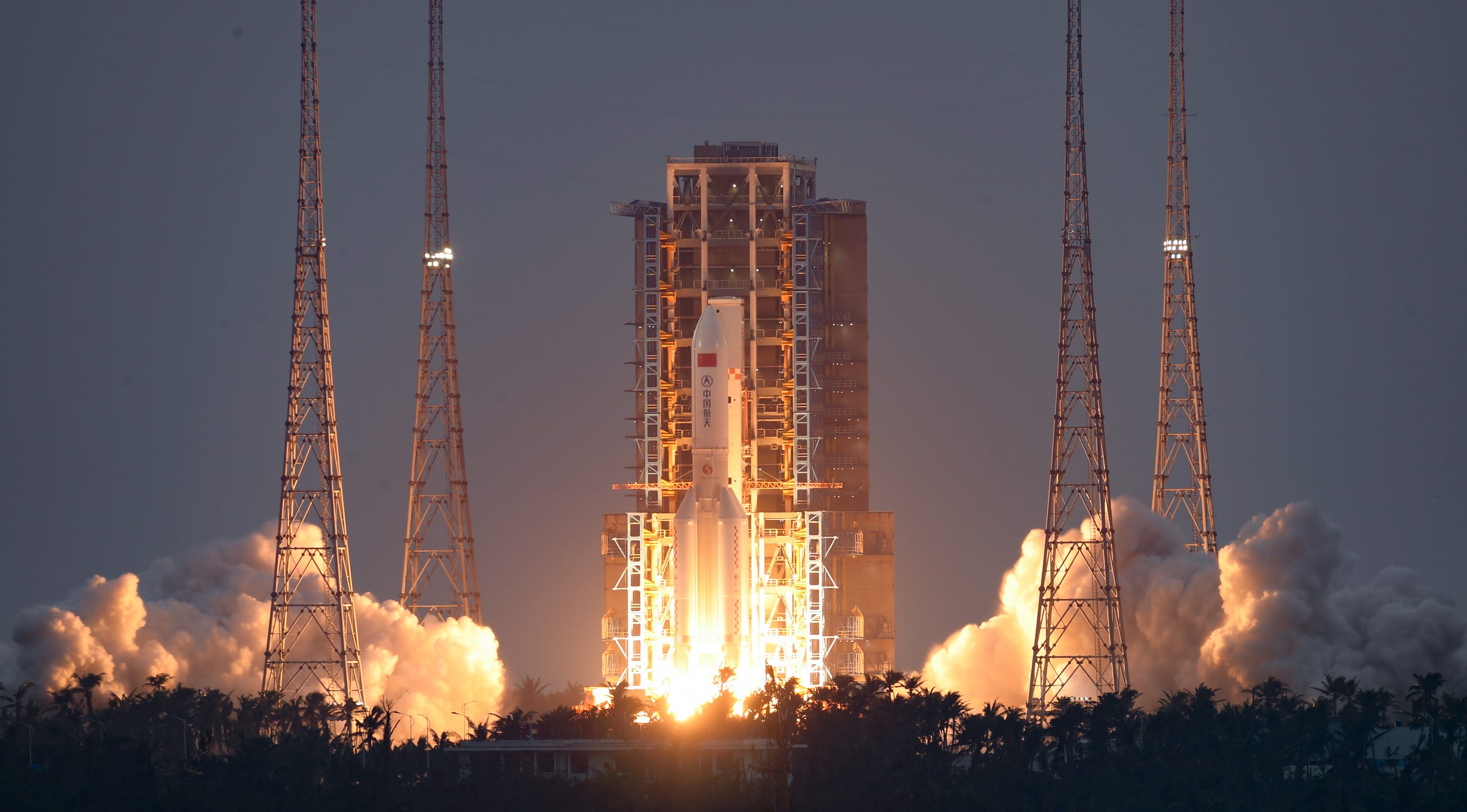GuoWang begins! [Long March 5B/YZ-2 Y6]
China's second mega-constellation has entered orbit after a Long March 5B launch.
China’s second largest rocket, the Long March 5B, blasted off from Launch Complex 101 at the Wenchang Space Launch Site at 18:00 pm China Standard Time, or 10:00 am Universal Coordinated Time, heading for a polar orbit on December 10th.
Riding atop of the Long March 5B for this launch was the first batch of GuoWang satellites, the vehicle’s first payload not for a China Manned Space Agency-related project. Ten satellites were included in this first batch, with the Yuanzheng-2 upper-stage to bringing the satellite group into a 1,090-kilometer by 1,110-kilometer orbit.
Few details have been shared about the design of GuoWang satellites but a slide from one of Space Pioneer’s presentations states that each satellite weighs approximately 600 kilograms. GuoWang is likely utilizing a ‘flat pack’ similar design to SpaceX’s Starlink and the Shanghai-backed Qianfan satellites due to the need for delivering dozens of satellites to orbit per launch. An electric propulsion system is also likely due to a planned operational orbit above 1000 kilometers in altitude, as it would be the most efficient means of propulsion to deorbit each spacecraft once they expend their usefulness.
The GuoWang (郭望) constellation is China’s second internet mega-constellation to be launched, with Qianfan (千帆) having reached orbit sooner with fifty-four satellites launched to date. GuoWang is operated by China Satellite Network Group and wholly backed by the Chinese government, making China Satellite a state-owned enterprise. By the 2030s up to 13,000 satellites could be in orbit providing worldwide services, however China focused services will be the immediate priority.
Preventing the Long March 5B’s first-stage from entering orbit for this launch was a Yuanzheng-2 upper-stage, flying its second mission. The previous flight of the Yuanzheng-2 was during the Long March 5’s debut flight in November 2016. A handful of Yuanzheng upper-stages are used as an optional extra stage for most of the Long March launch vehicles for delivering satellites into higher orbits or to deploy multiple satellites into various orbits. These stages burn storable propellants to perform multiple manoeuvers in orbit prior to releasing their payloads.
Today’s launch was the 5th mission for the Long March 5B, the 13th launch for the Long March 5 series, and the 552nd launch of the Long March launch vehicle series. This was also the 64th launch from China in 2024.
Lifoff video via SpaceLens云上天镜 and China航天 on Weibo, as well as Cosmic_Penguin on Twitter (officially “X”), and CGTN.
Check out the previous Long March 5 launch
What is the Long March 5B?
This section is for those less familiar with China's Long March series of launch vehicles.
The Long March 5B is China's most capable vehicle for sending payloads to low Earth orbit, and was developed by the China Academy of Launch Vehicle Technology and based on the Long March 5, removing the second-stage. The one-and-a-half-stage launch vehicle is fuelled with liquid hydrogen and liquid oxygen in its first-stage along with rocket-grade kerosene and liquid oxygen in four boosters.
The payload capacity of the launch vehicle is currently as follows:
25,000 kilograms to low Earth orbit
The Long March 5B's first-stage is powered by two YF-77 engines, which produce 143 tons of thrust using liquid hydrogen and liquid oxygen. To assist with liftoff, the rocket is equipped with four side boosters, each powered by two YF-100 engines that generate 245 tons of thrust using rocket-grade kerosene and liquid oxygen, providing a combined booster thrust of 979 tons. Together, the first stage and boosters deliver a total thrust of 1,122 tons.
On the launchpad, the Long March 5B stands at up to 53.66 meters tall and weighs up to 837,500 kilograms fully fuelled. The first-stage has a diameter of five meters, while the four boosters have a diameter of 3.35 meters, and the fairing has a diameter of 5.2 meters.
So far the Long March 5B has only flown from the Wenchang Space Launch Site, on the east coast of Hainan province.









![Chang'e 6 is Moon-bound after a perfect launch! [Long March 5 Y8]](https://substackcdn.com/image/fetch/w_1300,h_650,c_fill,f_auto,q_auto:good,fl_progressive:steep,g_auto/https%3A%2F%2Fsubstack-post-media.s3.amazonaws.com%2Fpublic%2Fimages%2F7dd04418-cf5e-40c0-adc9-1aa4c42d58f3_1000x772.jpeg)
